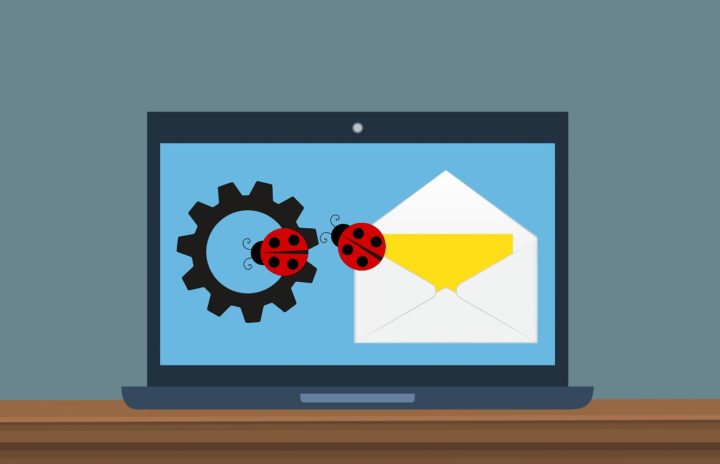Fake email and email scams used to be easier to spot as they were full of misspelled words or offers that are too good to be true. While some fraudsters still utilize these methods and make grammar mistakes, most suspicious emails are no longer as suspicious as they used to be.
Over the years, email scams have evolved into sophisticated, personalized emails. This has resulted in far more people falling victim to this sort of scam. This is why it’s more crucial now, more than ever, to learn how to tell if an email is a scam.
What Is An Email Scam?

Before we get into identifying email scam red flags, let’s take a closer look at what an email scam actually is. As the name implies, an email scam (or email fraud) is the intentional deception of another person via email.
Fraudsters rely on exploiting a victim’s naivete, or possibly their greediness and dishonesty. Email scams can take many forms but fraudsters usually want one of the following;
- Personal information
This can include everything from name, age, and address to your family members’ names and even contact details.
- Sensitive information
This includes credit card numbers, bank account numbers and details, passwords, and the like.
- Money
The endgame for Fraudsters is all about the money. Instead of collecting your information, they may just try to get you to send them money outright. They may even ask for payment utilizing a gift card, so the money trail is harder to trace.
6 Red Flags An Email Is A Scam

As previously mentioned, scam emails have become much more sophisticated. Scammers are even taking time to craft individual emails for their victims. While it is undeniably harder to identify scams these days, there are still red flags you can look out for. Review the following and commit them to your memory for an extra layer of protection against unwanted emails and scams.
1. Typographical Errors
This is perhaps the oldest and most common red flag. Most fraudsters choose more sophisticated and personalized emails, however, some may still send emails with typographical errors. This includes misspellings, grammatical errors, and incorrect punctuations. If you receive these emails from unknown email addresses, it’s probably best to delete them immediately.
2. Sense of Urgency
Many email scams convey a sense of urgency to immediately spur their victim into action. It can be a limited offer, an urgent notice, or something similar. If you receive this kind of email, it’s best to call the company directly to make sure the message is legitimate and immediate action is required.
3. Vaguely Addressed
Fraudulent emails (like phishing emails) may utilize vague terms to address you, like ‘Dear Sir’ or even just your username. This is because fraudsters may only have limited details. Sometimes nothing more than your email address and username. Keep in mind legitimate companies and institutions like banks will address you by name.
4. Nosy Requests
This is another old trick that is closely associated with phishing attacks. Many fraudulent emails are designed to capture or steal personal and sensitive information. Be wary if an email directs you to a website that asks you to enter sensitive information. Or if an email directly asks you for information like your Social Security number, credit card details, or other sensitive information.
5. Sender’s Email Address
Always make sure the email address corresponds with the supposed sender of the email. For instance, the email may seem like it’s from your bank but the email address might say otherwise. Scammers often set up a fake email address and connect it with a legitimate business or institution.
6. Incorrect URL or Fake Website Link
A fake website or web page link is a favorite tool of fraudsters. These web pages are made to capture all the keystrokes you enter or type while on them.
Make sure you’re visiting the correct website. Cross-check the link sent in the email with the URL of the actual site. To be on the safe side, it’s best to just go to your browser and type in the website yourself.
Types of Email Scams
Email scams come in a variety of forms, but here are three of the most common types:
-
Spam Emails
While not all spam emails are malicious, they could certainly be irritating. Spam can be from actual spammers selling products or trying to commit fraud. Spam may also be from virus-infected computers which send emails in bulk.
You can avoid spam by setting up temp mail or temporary email addresses through an email service. Use these temp emails when a website asks for your email address but you don’t want to receive any emails from them. You can also set up spam filters to more easily sort junk emails.
-
Phishing Emails
Phishing scams will attempt to get your personal or sensitive information and utilize it to steal your money or identity. Phishing also comes in different forms;
spear phishing
where a specific individual or business is targeted.
Whaling
is another type of phishing that targets senior executives. Then there’s also
smishing, which involves the sending of text messages. And
vishing
which involves a telephone conversation.
-
Spoofing Emails
Spoofing involves forging email headers to make it seem like the email is from a legitimate business or institution. Think about it as cloning a legitimate website. This is a common technique used by hackers to trick users into visiting malicious websites. This is far more dangerous than your average scam email since both the sender name and sender address will appear legitimate.
Once you identify an email as a scam, try to gather some information from the scammer, their name, or phone number. You can utilize these details to do a ClickSearch lookup or similar background check.
Wrapping it Up:
Fraudsters or scammers are con artists, experts at social engineering and manipulation. In this digital age, it pays to be vigilant in your digital correspondence. Always proceed with caution, after all, it’s infinitely better to be on the safe side.

















